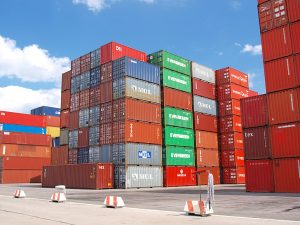While shipping has become sophisticated and more efficient over the centuries, risk management has become even more important to ensure the safe delivery of goods and profitability.
Ever since the COVID-19 pandemic created turmoil in the supply chain industry in 2020, freight forwarders in Sri Lanka and beyond have had to adopt prudent risk management strategies. Companies such as McLarens Sri Lanka have set up a robust supply chain risk management matrix.

container-cargo-freight-harbor-cargo-container-preview | img via pick pik
img via rawpixels
Risk Management Approach
A sound risk management approach includes a series of well-defined steps for its efficiency.
· Risk identification
· Risk evaluation
· Risk response
· Risk monitoring
Prioritizing risks
The four-step process allows companies to prioritize risk, and shape the response to incorporate ‘risk acceptance, avoidance, reduction, retention and transference in an optimal manner. For instance, this approach enables companies to avoid the risk of supplier bankruptcy by adopting a dual storage solution.
Managing lower predictability risks
Meanwhile, risks that are harder to predict and have far-reaching consequences, such as terrorism, natural disasters and cyber-attacks call for stronger crisis management plans. More predictable and small-scale risks call for prevention through education, training, insurance and technology adaptation.
Managing higher predictability risks
Risks with higher predictability but greater negative impact require an entirely different approach. For example, the companies can reduce the impact of the US–China trade dispute by revisiting the sourcing and inventory strategy to create a new supply chain.
The importance of a systematic approach
Hence, it is important to have in place a systematic approach to classifying risks and relevant responses. The key is to consistently monitor, review and analyze data and insights to improve the existing risk management strategies.
